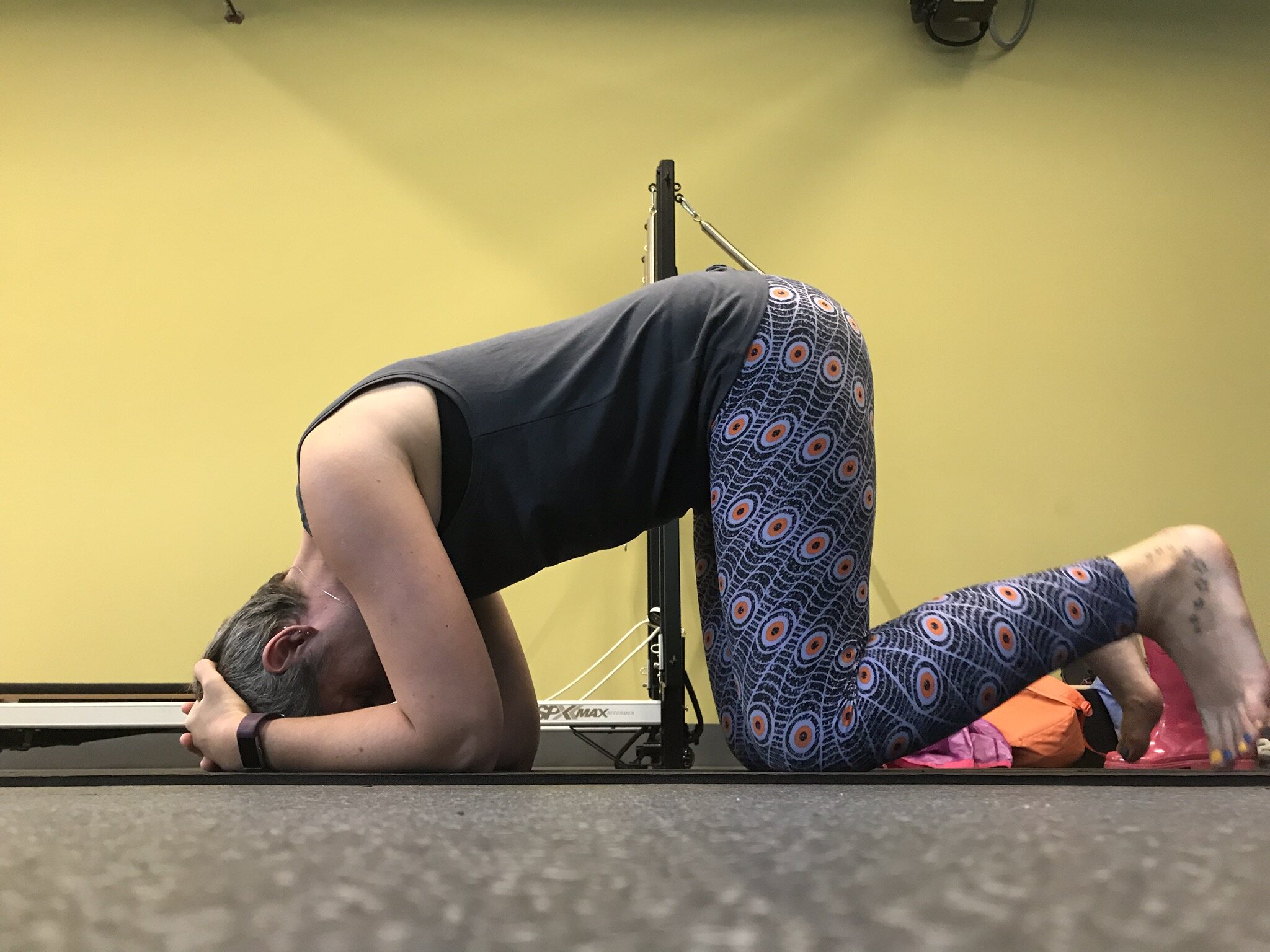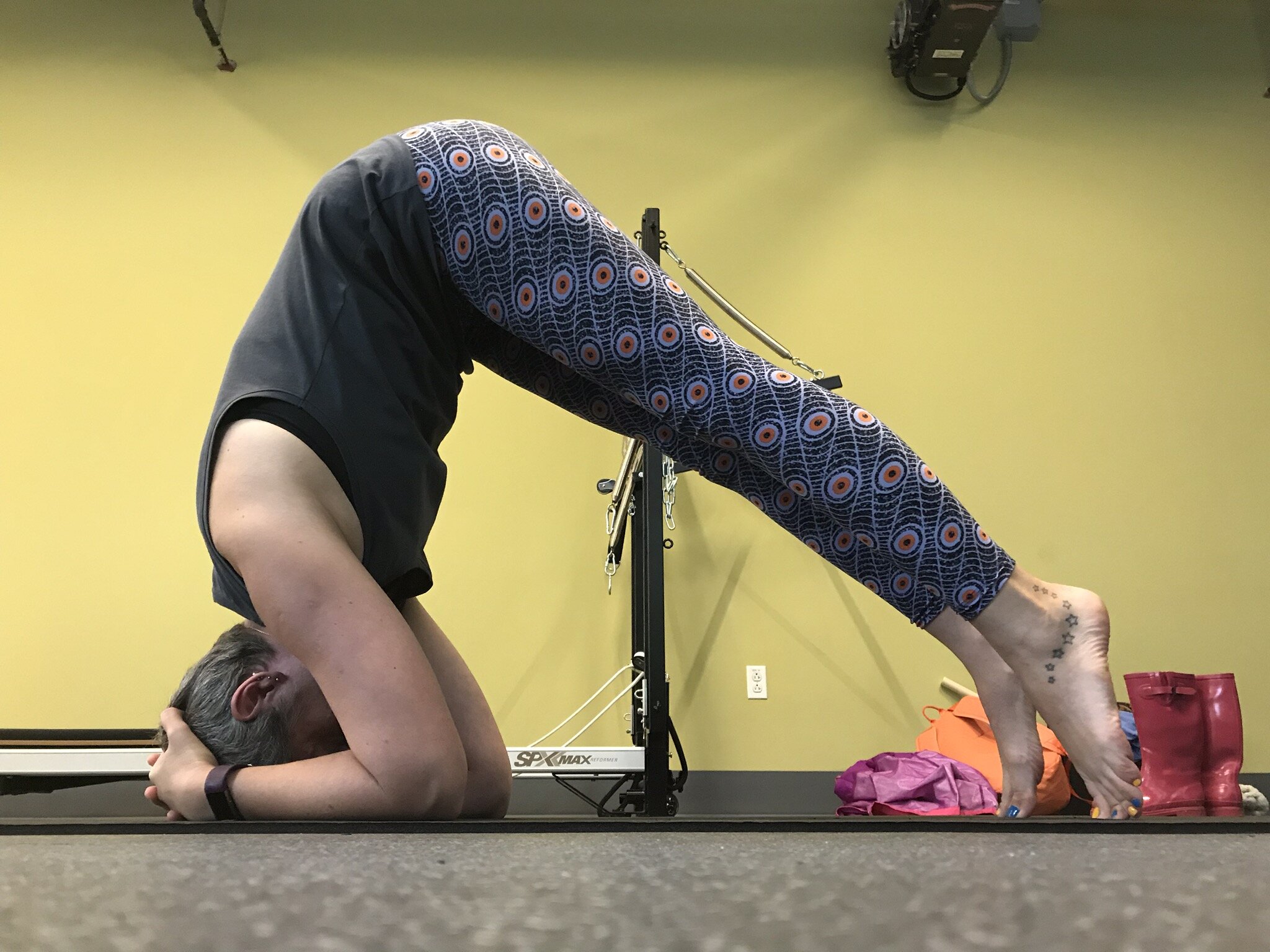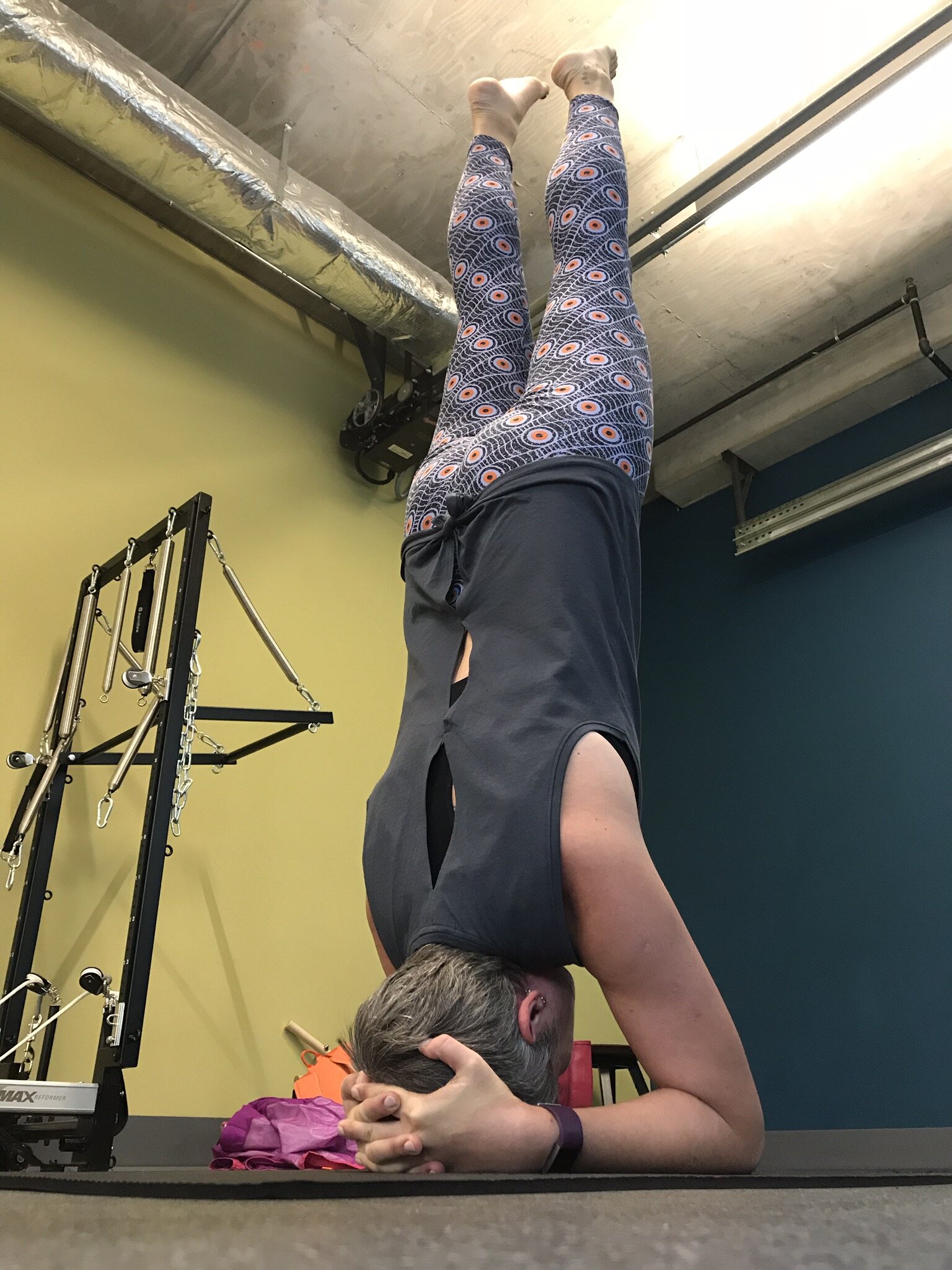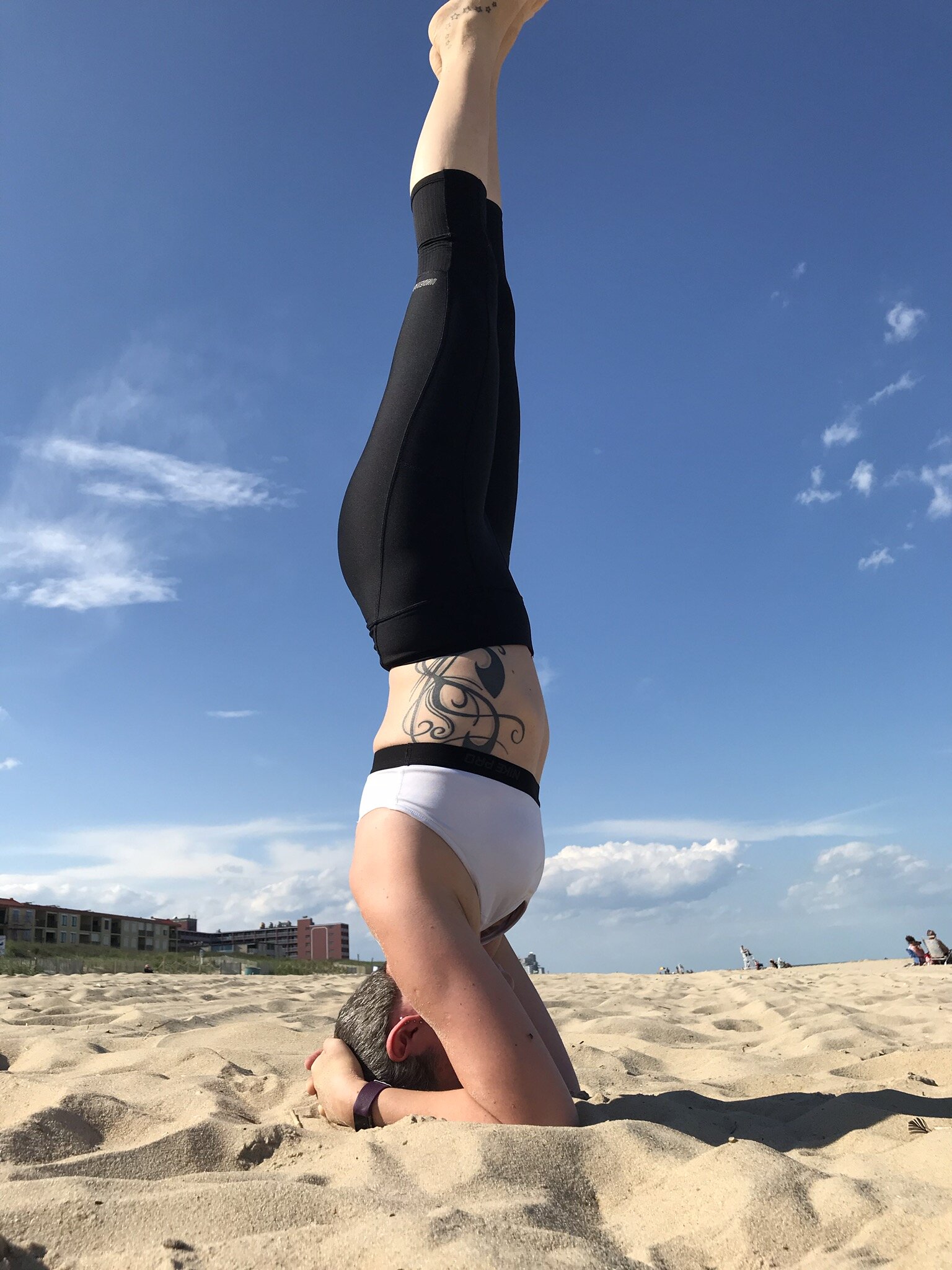Pose of the Month: Salamba Sirsasana - Headstand
By Kasia Sobieraj Hello Yogis!I’m excited to talk to you today about my nemesis - but what’s slowly becoming my favorite asana- Headstand- Salamba Sirsasana. For me this is the pose that I have been struggling with since my fear of falling and landing on my butt or my back in front of the entire class was getting the best of me. I am learning to embrace it and move on with it. And it’s a great conversation piece and party trick ;) AND so much more!
"The best way to overcome fear is to face with equanimity the situation of which one is afraid." - B.K.S. Iyengar
Headstand: Step-by-StepUse a mat to pad your head and forearms- doing it on bare floor is not fun. Kneel on the mat. Lace your fingers together and set the forearms on the floor, elbows at shoulder width. Roll the upper arms slightly outward, but press the inner wrists firmly into the floor. Set the crown of your head on the floor.


Exhale and lift your feet away from the floor. Take both feet up at the same time, even if it means bending your knees and hopping lightly off the floor. As the legs (or thighs, if your knees are bent) rise to perpendicular to the floor, firm the tailbone against the back of the pelvis. Turn the upper thighs in slightly, and actively press the heels toward the ceiling (straightening the knees if you bent them to come up). The center of the arches should align over the center of the pelvis, which in turn should align over the crown of the head.Firm the outer arms inward, and soften the fingers. Keep pressing the shoulder blades against the back, widen them, and draw them toward the tailbone. Keep the weight evenly balanced on the two forearms. Your tailbone continues to lift upward toward the heels. Once the backs of the legs are fully lengthened through the heels, maintain that length and press up through the balls of the big toes so the inner legs are slightly longer than the outer.

 Benefits of Headstand
Benefits of Headstand
- Calms the brain and helps relieve stress and mild depression
- Stimulates the pituitary and pineal glands
- Strengthens the arms, legs, and spine
- Strengthens the lungs
- Tones the abdominal organs
- Improves digestion
- Helps relieve the symptoms of menopause
- Therapeutic for asthma, infertility, insomnia, and sinusitis
Hope you will find this bit helpful and we can always practice together. It is very rewarding once you find yourself going upside down in this - king of the poses- Salamba Sirasana .Come join me at my regular class at Yoga Heights Georgia Ave location on every Wednesday at 7.45pm!Namaste!
Take class with Kasia:Wednesday at Georgia Avenue - 7:45 pm (All Levels Flow)

